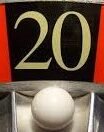New South Wales Gaming to See Increased Point of Consumption Tax
[ad_1]
Posted on: June 21, 2022, 09:37h.
Last updated on: June 21, 2022, 10:03h.
New South Wales (NSW) gaming operators are about to see a tax increase. The point of consumption tax (POCT) is going up as of next month, which might mean consumers will see a difference in the cost of gambling.

The increased POCT will be 15%, and no gaming operator will avoid paying it. The tax applies to where the bet was placed, not where the operator who accepted the wager is located.
This means that all active operators in NSW will pay the tax, regardless of where their license registration is. The new tax rate follows a similar measure in Queensland a few weeks ago and is the result of lobbying on the part of Australia’s Tabcorp.
More Tax Headaches for Operators
In January 2019, the NSW government introduced a POCT of 10%. This was to close a loophole in existing laws that meant most online wagers were tax-free. The government realized it was losing considerable tax revenue and put the tax in place.
The increase in the POCT shouldn’t come as a surprise to operators. The NSW 2022/23 official State Budget listed it as a new item. The tax change will take effect on 1 July, and the government expects it to increase its take by AU$740.0 million (US$515.6 million) between now and 2026.
Aligning the POC tax and the betting tax, including effective fixed odds betting tax and totalisator betting tax at 15%, will provide competitively neutral tax rates between betting products, regardless of the gambling operators or whether the betting activity is online or in person,” explains NSW’s new State Budget.
The Australian states of Victoria, Tasmania, Western Australia and South Australia also have a 15% POCT on gambling. The Australian Capital Territory, one of 10 federal territories, is part of that group, as well. Queensland’s rate is 20%.
Some 33% of the money the government receives will be returned to racing, up from 20%. The remaining 67% will remain in government coffers.
With the rising cost of doing business in NSW, the gambler is likely to pay for any increased operator expenses. If so, the increase could come through lower prices and larger margins.
Tabcorp Finds Relief Once Again
Tabcorp, a land-based operator active in all of Australia’s six states, welcomed the increased rate and described it as an additional positive step toward industry reform. It added that it also looks forward to hearing about the government’s plans to review the wagering tax system, regulation, and industry funding in coming years.
Tabcorp will receive transition payments for 18 months starting at the beginning of the tax changes. This is to make sure it’s not worse off than its tax obligations due to the higher rate.
Racing NSW has accumulated $81 million (US$56.45 million) since the introduction of the POCT. This includes nearly AU$40 million (US$27.87 million) in the last fiscal year. The figures represent 72% of the 20% tax the racing industry received.
Greyhound racing receives 13%, while harness racing gets 15%. However, greyhound racing’s monies fund the NSW Greyhound, Welfare & Integrity Commission, not their commercial counterparts.
The introduction of the POCT, in addition to generating revenue for NSW, also helped Greyhound Racing New South Wales. The entity carried the responsibility of funding integrity initiatives in the racing industry, but the tax cleared that expense.
[ad_2]
Source link
